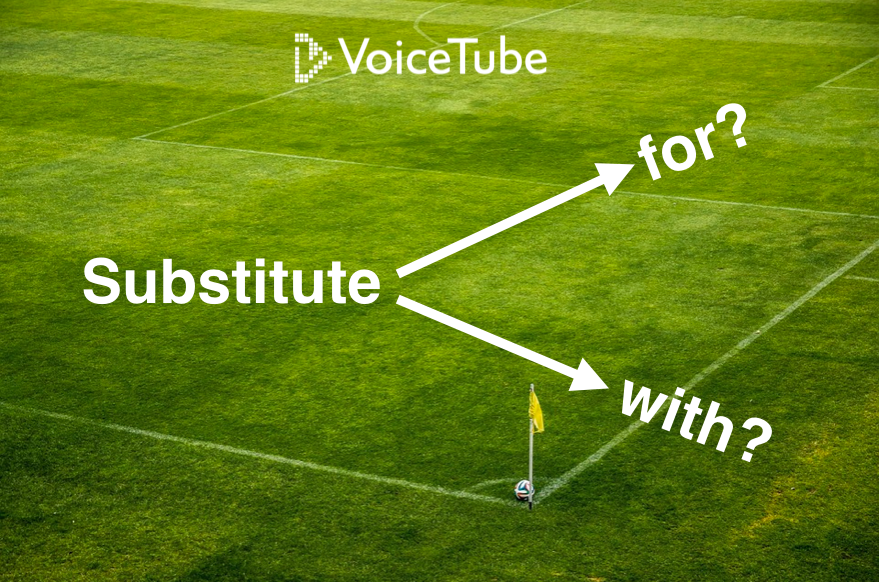If in a football (soccer) match, Luis Enrique substitutes Neymar with Messi, who gets in and who gets out? If you substitute saturated fats for healthy food, are you improving or worsening your diet? Read this article and master the use of these expressions!

The Many Meanings of Substitute
If you like football or, in general, have a life, you will have probably heard the word substitute a lot of times. This is a really useful word which can work in three different ways: as a noun (We need a substitute for the sick teacher), as an adjective (He is the substitute player that is replacing their top scorer) and as a verb. This last usage is the one which most often provokes headaches to readers and listeners alike because it is not always easy to figure out what the author meant.
The reason for this problem is that the meaning of substitute changes radically depending on the preposition that follows it. Let us see two sentences to understand the problem:
- We substitute pizza for vegetables as our dinner: we are having pizza instead of vegetables for dinner.
- We substitute pizza with vegetables as our dinner: we are having vegetables instead of pizza for dinner.
If you have read the two meanings of substitute as a verb, you will no doubt be a bit confused. The same verb and a very similar sentence have two totally opposite meanings, and the only difference is a preposition! Google the phrase “substitute unhealthy food for” and you will find loads of health-related websites that tell you to eat more unhealthy food, which means that this is probably confusing some native speakers too. But don’t despair! This makes sense after you understand it.
If we substitute something (let’s call it A), that means A is either:
- Being used or placed in the place of something else (B). In this case, we use the preposition for. The sentence pattern is: substitute A for B, and means that in the end A is used instead of B.
- Having something else (B) being used or placed in its place. The preposition with is used in this meaning. The sentence pattern is: substitute A with B, and the sentence means that in the end B is used instead of A. This happens to be the same as that of the verb replace: if we replace A with B, we are using B instead of A.
The first usage is the oldest and most traditional, while the second is widespread nowadays (sometimes with the preposition by instead of with). As a conclusion: if you want to always be on the safe side, I recommend that you stick to the following patterns:
As a conclusion: if you want to be always on the safe side, I recommend that you stick to the following patterns:
- Substitute A for B, when you are using A instead of B.
- Replace A with B, when you are using B instead of A.
Please note that there are some other usages of substitute as a verb, but these will be covered in a future post.
Now you can go and celebrate that you mastered this verb by learning how to annoy a substitute teacher, that is, somebody that is substituting for somebody.
Problems understanding this video? Watch it on VoiceTube and unleash the full power of your English!
